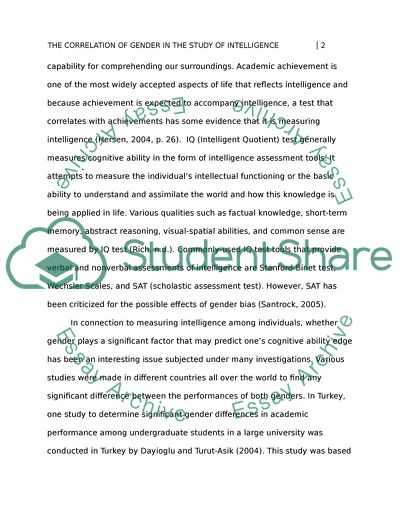Cite this document
(The Correlation of Gender in the Study of Intelligence Literature review - 2, n.d.)
The Correlation of Gender in the Study of Intelligence Literature review - 2. Retrieved from https://studentshare.org/sociology/1752102-critically-discuss-the-view-that-gender-is-relevant-to-the-study-of-intelligence-ground-your-answer-in-theory-and-illustrate-with-research-with-examples-and-a-focus-on-primary-sources
The Correlation of Gender in the Study of Intelligence Literature review - 2. Retrieved from https://studentshare.org/sociology/1752102-critically-discuss-the-view-that-gender-is-relevant-to-the-study-of-intelligence-ground-your-answer-in-theory-and-illustrate-with-research-with-examples-and-a-focus-on-primary-sources
(The Correlation of Gender in the Study of Intelligence Literature Review - 2)
The Correlation of Gender in the Study of Intelligence Literature Review - 2. https://studentshare.org/sociology/1752102-critically-discuss-the-view-that-gender-is-relevant-to-the-study-of-intelligence-ground-your-answer-in-theory-and-illustrate-with-research-with-examples-and-a-focus-on-primary-sources.
The Correlation of Gender in the Study of Intelligence Literature Review - 2. https://studentshare.org/sociology/1752102-critically-discuss-the-view-that-gender-is-relevant-to-the-study-of-intelligence-ground-your-answer-in-theory-and-illustrate-with-research-with-examples-and-a-focus-on-primary-sources.
“The Correlation of Gender in the Study of Intelligence Literature Review - 2”. https://studentshare.org/sociology/1752102-critically-discuss-the-view-that-gender-is-relevant-to-the-study-of-intelligence-ground-your-answer-in-theory-and-illustrate-with-research-with-examples-and-a-focus-on-primary-sources.


